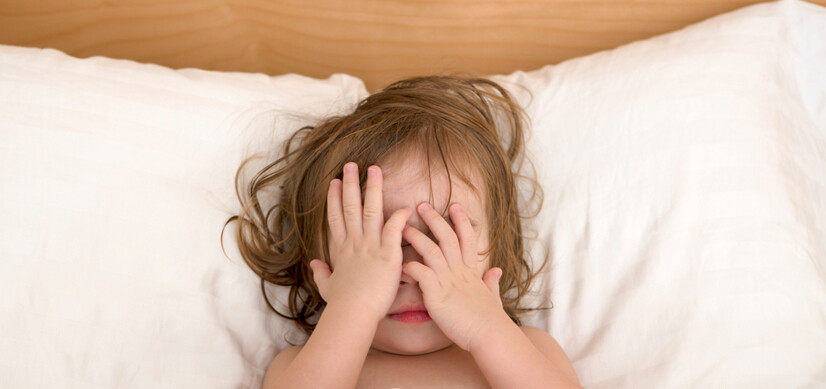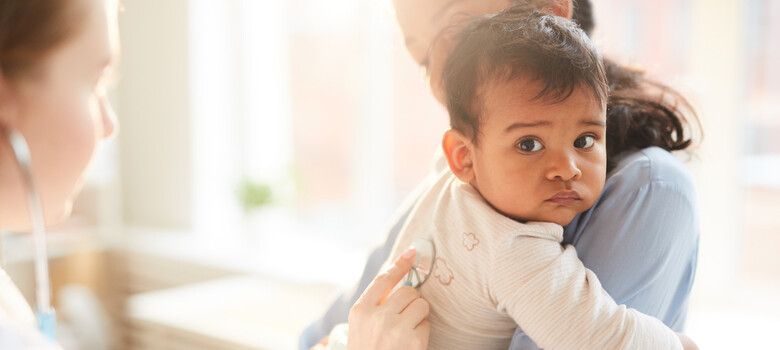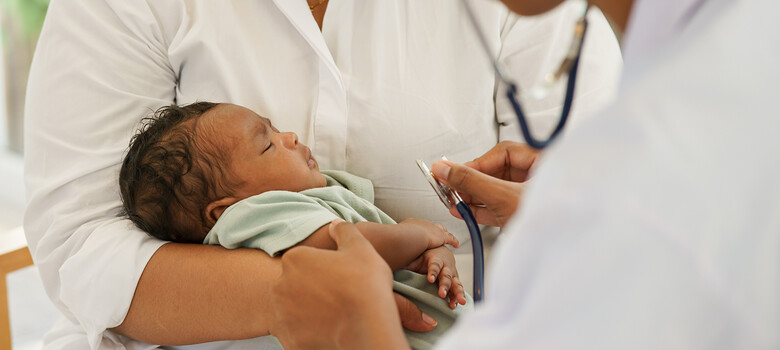 From the DukeHealth.org archives. Content may be out of date.
From the DukeHealth.org archives. Content may be out of date.
Sleep Terrors and Sleep Walking

Children with sleep problems cause many parents to ask their pediatrician, “What should I do when my child screams out at night?” Fortunately most of these phenomena are transient and disappear over time. Richard M. Kravitz, MD, a Duke pediatrician certified in sleep medicine, tells us what we need to know, and why not to worry.
Sleep walking and sleep terrors are two of the more commonly reported sleep disturbances in children. They, along with confusional arousals, belong to a class of sleep disorders called parasomnias.
While disturbing to parents, these events are benign and self-limited, usually resolving by adolescence.
Sleep Phases
Normal sleep is divided into two phases: rapid eye movement (REM) sleep and non-rapid eye movement sleep (NREM).
Most people have heard of REM sleep. However, less-known NREM sleep makes up the majority of sleep time (about 75 percent).
NREM sleep predominates in the first third of the night and sudden shifts out of its deepest portions (slow wave sleep) are when sleep walking and sleep terrors can take place -- usually within a couple of hours of the child falling asleep. REM sleep is recorded more in the early morning hours, which is when dreams and nightmares arise.
Parasomnias are noted for having a strong family history. Ninety percent of children with sleep terrors and 80 percent of children who sleep walk have a family member who has exhibited similar behavior.
In all cases, these parasomnias are notable for the patient not remembering the event the next morning. Anything that fragments sleep, such as inadequate sleep, illness, fever, or stress can increase the number of these events.
In general, sleep walking and sleep terrors are not associated with any underlying psychological problems.
Types of Sleep Disorders
Confusional arousals are associated with what appear to be sudden awakenings -- the child acts confused and disoriented. The child will frequently sit up, look around the room, and possibly moan or have inappropriate speech or behavior.
Despite appearing awake, they are still asleep. Attempts to communicate with the child will be unsuccessful (unless the child should fully awaken). The events tend to last for several minutes. Afterward, the child will lie back down and resume normal sleep. These events are very common in children under five years old.
Sleep terrors can be very frightening events for the parents. They have many aspects in common with confusional arousals, but they are associated with the child screaming and looking terrified.
An increased heart rate, rapid respirations, sweating, and dilated pupils are frequently described. Despite appearances, the child is still asleep.
Children will frequently push away family members who are trying to comfort them; they might even become more agitated by this interaction.
As with confusional arousals, the episodes will end as spontaneously as they began. If the child should awaken from one of these events, he or she will have no recollection of the episode and will not be able to identify any “precipitating dream”.
This is in contrast to nightmares (which originate from REM sleep and occur later in the evening), for which the child can usually describe their dreams in detail.
Sleep terrors can last for up to several minutes and may be associated with sleep walking. The overall incidence is 3 percent in children. They usually occur between four and 12 years old with a peak incidence around age eight.
Sleep walking (somnambulism) is walking while asleep. Sleep walking is frequently staggered and clumsy, with the child having a blank expression on his or her face. The episode can be more than just walking; patients have been noted to do complicated or bizarre maneuvers such as opening doors and going outside, climbing out windows, or turning on the gas in the kitchen.
As with sleep terrors, trying to awaken the child can frequently be associated with combative behavior. Episodes can last as long as 30 minutes but are usually shorter. Sleep walking is very common, with an overall incidence of between 1 to 15 percent (15 to 40 percent of children will do it at least once in their lifetime, and 3 to 4 percent of children will have frequent episodes).
Peak incidence occurs between four and eight years old. There is also an increased incidence of sleep talking reported in patients who sleep walk (a 30 percent incidence in sleep walkers versus 5 percent in the general population). Many children with sleep walking report having had confusional arousals when younger.
Diagnosis and Management
No laboratory testing is warranted for any of these conditions; the diagnosis is made by history alone. Sleep studies are usually not useful unless other symptoms such as snoring or apneas are present. Occasionally, an electroencephalogram (EEG) is indicated to assess for seizures in unusual cases.
Management of these parasomnias is mostly supportive. That being said, there are several things that parents can do to minimize the number and severity of these events.
During the events, it is best for the parents to let them run their course. Trying to reassure or awaken the child can often lead to the event becoming more severe.
For sleep walkers, it is best to try and gently lead the child back to their bed, where they will frequently continue their sleep. It is imperative to have the child in a safe environment so that they cannot hurt themselves. This would include keeping the floor clear of obstacles, having a gate at any stairwell, and locking the doors to the house and windows so that the children do not venture outside.
As sleep deprivation can worsen the situation, make sure the child has an adequate amount of sleep. Getting a good night’s sleep on a regular basis is important. Fevers can also worsen the situation, so fever control is warranted during illnesses.
Medications are not indicated for these conditions unless the conditions prove problematic. Benzodiazepams such as diazepam (Valium) can decrease the incidence and severity of sleep terrors and sleep walking and may be especially useful if the episodes occur in clusters. Tricyclic antidepressants may be tried when benzodiazepams are unsuccessful.
Use of these medications is usually not required and should only be considered after discussion with a provider knowledgeable about sleep disorders in children.



